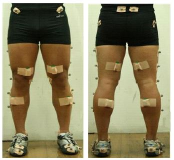
The purpose of this research is to investigate the factors affecting the performance capability of lunge movements by performing lunge movements which are commonly used as a method of instant physical movement in sports with a kinetic analysis including an EMG analysis. This research targeted 14 skilled fencers and made the subjects perform kick-lunges which allow them to go farthest from their positions and performed an analysis on such, applying a 3D motion analysis system and an EMG system. The subjects performed kick-lunges in two movements; one with a preliminary movement and the other without it and those are performed with both dominant leg and non-dominant leg. The result of this research is as follows. The lunges with a preliminary movement showed higher performance capability than those without it. Furthermore, as the level of skills gets higher, the length of lunges gets longer, and it seemed that a tactical mechanism shortening exercise performance times was used as a mechanism to control the impulse coming from such lengthened lunges. In addition, a difference appeared in mechanical factors such as moment and power in a dominant leg movement and it seemed to result from a difference in an functional capability using muscles.


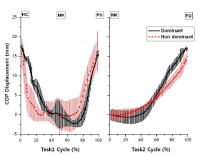


PURPOSE This study aims to help improve performance by comparing and analyzing the kinematic variables for each upper and lower extremities segment when two groups of players attack the national women’s fencing players in a match situation. METHODS This study divided the movement time, movement time ratio, Fente step length change, angle factor at each event, and velocity factor of the fencing point of a sword at each event into the Olympic medalists’ group (Group A) and the international competition winners group (Group B) during the fencing Marche Fente. An independent t-test was performed for each factor, and the results were compared. RESULTS As a result, the difference between the two groups in movement time was statistically significant in the front of the foot in the velocity factor. However, no statistical significance was found between the two groups in the front angle of the trunk, the elbow angle, and the knee angle. CONCLUSIONS This indicates that group A and group B are both outstanding players with the best performance, so they are similar in the details of the movements except for the very slight difference in time and velocity. Therefore, the average of the result values of the joint angle will be a feedback index for fencing beginners or education subjects who are now starting to fencing.
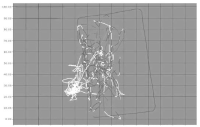
The purpose of this study was performance improvement through analysis of movement in elite field hockey players regarding positions using real-time GPS monitoring for compared training game and 2014 Incheon Asian Games. Fifteen elite women field hockey players (Defender: 4, Mid-fielder: 6, and Forward: 5) participated in this study. There were 2014 Incheon Asian Games Korean national team. Real-time GPS system analysis was completed during 10 training game appearances 5 2014 Incheon Asian Games appearances. The results of this study showed that in training game mid-fielder>forward>defender for 3, 4, 5, and 6 zone at speed zone by moving distance, in 2014 Incheon Asian Games forward>mid-fielder>defender for 6 zone at speed zone by moving distance. And moving distance by quarter increased all position in 2014 Incheon Asian Game more than training game. Therefore, These data might be useful to analysis of movement in field hockey players. Moreover improved performance and individual exercise ability by feedback for players distance, heart rate, and exercise trajectory. Thus, Gold-medal won at the 2014 Incheon Asian Games in field hockey.

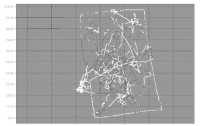

The primary purpose of the study was to identify the characteristics of Korean national youth soccer players’ functional movements. The secondary purpose was to examine whether certain tests of Functional Movement Screen (FMS) meaningfully achieve goodness-of-fit for the soccer-specific movements. Korean national youth soccer players (30 male players, 18.37 ± 0.67 yrs, 178.7±7.09 cm, 70.2±6.46 kg), performed FMS tests [deep squat (DS), hurdle step (HS), in-line lunge (IL), shoulder mobility (SM), active straight leg raise (ASLR), trunk stability push-up (TSP), and rotary stability (RS)]. The mean (±SD) FMS composite score and each test score were calculated. Rasch analysis, which was used to determine the goodness-of-fit for the tests, was applied to examine the item difficulty of the FMS tests. The mean FMS composite score was 10.2± 1.79; the mean DS, HS, IL, SM, ASLR, TSP, and RS score were 1.13±0.35, 1.27±0.45, 1.4±0.56, 1.6±0.77, 2.07±0.69, 1.43±0.82, and 1.3±0.47 respectively. According to the results of Rasch analysis, 4 tests (DS, IL, ASLR, and RS) were shown to be within the acceptable range (infit & outfit > 0.5 ~ < 1.5). The other 3 tests (HS, SM, and TSP) were shown to be out of acceptable range. The additional analysis revealed the DS (logit = 2.08) as the most difficult test and ASLR (logit = -3.16) the least. The results of the study showed that the players’ FMS composite score was lower (< 14) than the cut-off points used by previous studies for different athletes. The further study is warranted to examine the relationships between the scores of the tests appeared to be soccer-specific in the present study and the level of performance variables.

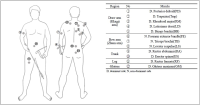
The past few decades has seen increasing kinematic studies using surface electoromyography (EMG) in archery, however there has been no such specific study in Korean traditional archery. The purpose of this study was to evaluate EMGs during archery shooting motion in Korean traditional archers. Ten men Korean traditional archers were participated, and divided into two groups according to the shooting stance; parallel stance group(PSG, n=5) and oblique stance group(OSG, n=5). The surface EMGs were measured 12 muscles during shooting motion of five events including Junbi(Set), Geogung(Set up), Manjak(Full draw), Balsi(Release), Machigi(Ending). At the result, muscle activity of posterior deltoid, trapezius, rhomboid major, latissimus dorsi, biceps brachii, forearm extensor bundle, triceps brachii, levator scapulae significantly increased at event of full draw and release, then significantly decreased again at event of ending, respectively(p<.01, p<.001). The muscle activity of erector spinae(ES) was also significantly increased at event of full draw and release(p<.01, p<.001), while no significant changes in muscles of rectus abdominis, rectus femoris(RF), gluteus maximus. As a result of comparing PSG and OSG, muscle activity of RF in OSG was higher than PSG at event of release(p<.05), it remained until event of ending(p<.05). On the other hand, the higher the tension of the bow, the higher the muscle activity of the draw arm at event of release(p<.05). These results suggest that when Korean traditional archery shooting, both side arm and back muscles are more activated than the abdomen, leg and hip muscles. The parallel stance might suppress the muscle activity of the lower extremities to twist the upper body. And the higher bowstring tension needs to increase of muscle strength in BB of draw arm.


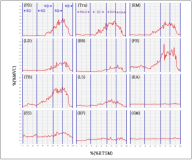
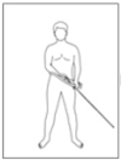
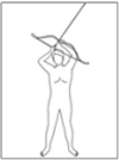
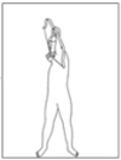
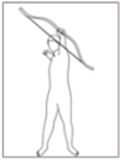
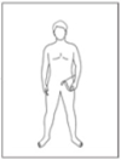
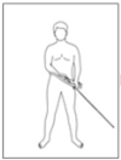

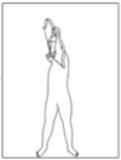
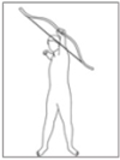
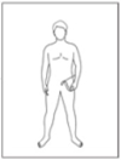
PURPOSE The purpose of this study is to analyze the biomechanical variables involved in ballet dancers’ ankle muscle imbalance when performing relevé movements. METHODS The subjects of this study (n=14, age: 22.29±1.73 years old, height: 161.4±5.06cm, weight: 51.88±7.51kg) were 14 ballet dancers with 9 years of experience. Based on the reciprocal muscle strength ratio, the dancers were divided into the following groups: Close to the normal value (RMIS) and far from the normal value (RMIB) using the maximum values of plantar flexion and dorsiflexion of the ankle joint using an isokinetic measurement equipment (60°/sec). RMIB). The biomechanical variables, namely the ankle joint movement and ground reaction force, were subsequently measured. SPSS 26.0 was used for data analysis and independent t-test was used for statistical verification. RESULTS The ground reaction force in the Z (vertical) direction based on the ankle joint muscle strength imbalance of ballet dancers was significantly lower in the RMIB group. In addition, although it was not a statistically significant difference, the plantar flexion movement was lower in the RMIB group, and there was a significant difference in the generation of ankle joint movement in the Z direction. CONCLUSIONS In conclusion, in order for a ballet dancer to efficiently utilize the force generated from the supporting leg when performing a movement, ankle imbalance must be taken into consideration when training.
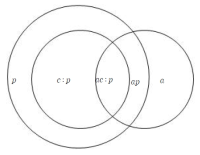
The purpose of this study was (1) to analyze judges’ evaluation on figure skating performance and statistical analysis and (2) to make recommendation to improve judges' performance. Data were 62 figure skaters’ scores from Senior Woman 1 Group Part at 2015 The National Figure Skating Championship in Korea. Data of presentation part in Short Program were analyzed. Presentation part consists of skating skills, transitions/linking footwork/movement, performance/execution, choreography/composition and interpretation. Nine judges evaluate skater's presentation with the score 10.0 for each factor. Generalizability theory, descriptive statistics and ANOVA were utilized. Results showed that generalizability coefficient of presentation part was over 0.9, therefore stable reliability was secured. The error source about players has more significant impact to evaluation than other error sources. Generalizability coefficient was stable when reducing the number of judges up to 2. Also, judges generally represented aspects of similar evaluation, but different aspects appeared on a few judges’ assessment in the components of presentation. Discussions were provided in terms of the reliability of the judging method for the presentation part of figure skating and the effective measurement condition.

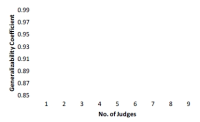
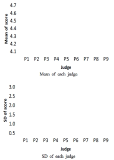
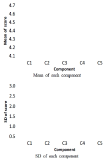
PURPOSE This study aimed to verify the accuracy of three-dimensional (3D) motion data produced through artificial intelligence-based user motion recognition technology with images obtained using a smartphone monocular camera. This was done to explore the possibility of developing an application that can improve the reliability of the measurement of physical activity performing motions and feedback provision. METHODS To check the accuracy of the artificial intelligence-based 3D motion analysis system that utilized a semi-supervised learning method, a commercialized 3D infrared motion analysis system measured and compared motions on three movement planes, motions with limited joint movement, and fast motions in a wide moving range. RESULTS The motions on the coronal and sagittal planes produced through the 3D motion analysis application showed very high measurement accuracy; however, the accuracy of the measurement of motions on the horizontal plane, which could not be measured directly with a camera, was relatively lower than that of the coronal and sagittal planes. Accuracy in measuring 3D motion was moderate in moving motions and low in motions with limited joint movement. CONCLUSIONS For the developed 3D motion analysis system to be used in online physical education, the types of physical activities included in the program should be comprehensively composed through the analysis of the content system of the physical education curriculum and the resultant physical activities.
The purpose of this study was to analysis of moving distance during games, time and heart rate for hockey games using GPS (global positioning systems) by positions in Korea national female athletes. The subjects were Korea national female hockey players (n=13) including 4 forwards, 4 midfields, and 5 fullbacks that participated in five Korea vs. Japan international games. All subjects were wearing GPS throughout the games. The results were as follows: Firstly, the average total travel distance per game was approximately 5.7km and higher in the second half. Physical movement in the games was not different from positions where 70% of physical movement was performed at low intensity and 30% at moderate and/or vigorous intensity, suggesting that the subjects; physical movement was performed at the appropriate level of exercise intensity. Secondly, during the game, the subjects performed physical movement faster than 11km/h for 22 minutes, indicating that the subjects could maintain their physical movement at a relatively faster speed throughout the games. In particular, midfields showed a greater amount of physical movement at moderate speed. Thirdly, the average exercise heart rate was 145bpm, which was equivalent to 60% of HRmax. The subjects maintained their average exercise heart rate greater than 150bpm (above 60% of HRmax) for 40 minutes during the games, indicating that the players had an ability to maintain physical movement at high intensity throughout the games. In conclusion, in spite of the fact that Korea national female hockey players have an ability to maintain physical movement at a relatively faster speed and higher intensity, their physical movement and performance are often affected. Therefore, it is necessary to develop and apply the specific interval training program for national female hockey players that can facilitate the faster recovery from the repetitive physical movement requiring power and speed at high intensity.
PURPOSE This study aimed to compare and analyze the game content of the “3-rounds, 2-win system” matches before and after the rule revision implemented in 2022. METHODS This study covered 72 matches from the 2019 Rome World Championships Grand Prix, 92 matches from the Sofia World Championship Grand Prix, and 173 matches from the 2022 Rome World Championships Grand Prix. In total, 337 game videos were analyzed to assess the players‘ game content before and after the rule revision. RESULTS Analyzing the basic skills before and after the revision shows that the frequency of round kicks and pushes was high. Notably, while the frequency of round kicks, which are primarily used by players, decreased after the revision, the scoring success rate increased. CONCLUSIONS Based on the research findings, it is believed that post-revision, players are focusing more on game management aimed at scoring rather than attempting preliminary movements or connecting kicks to deceive their opponents.